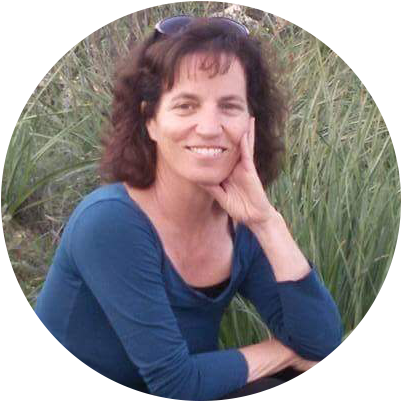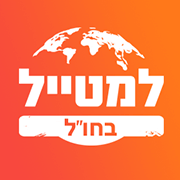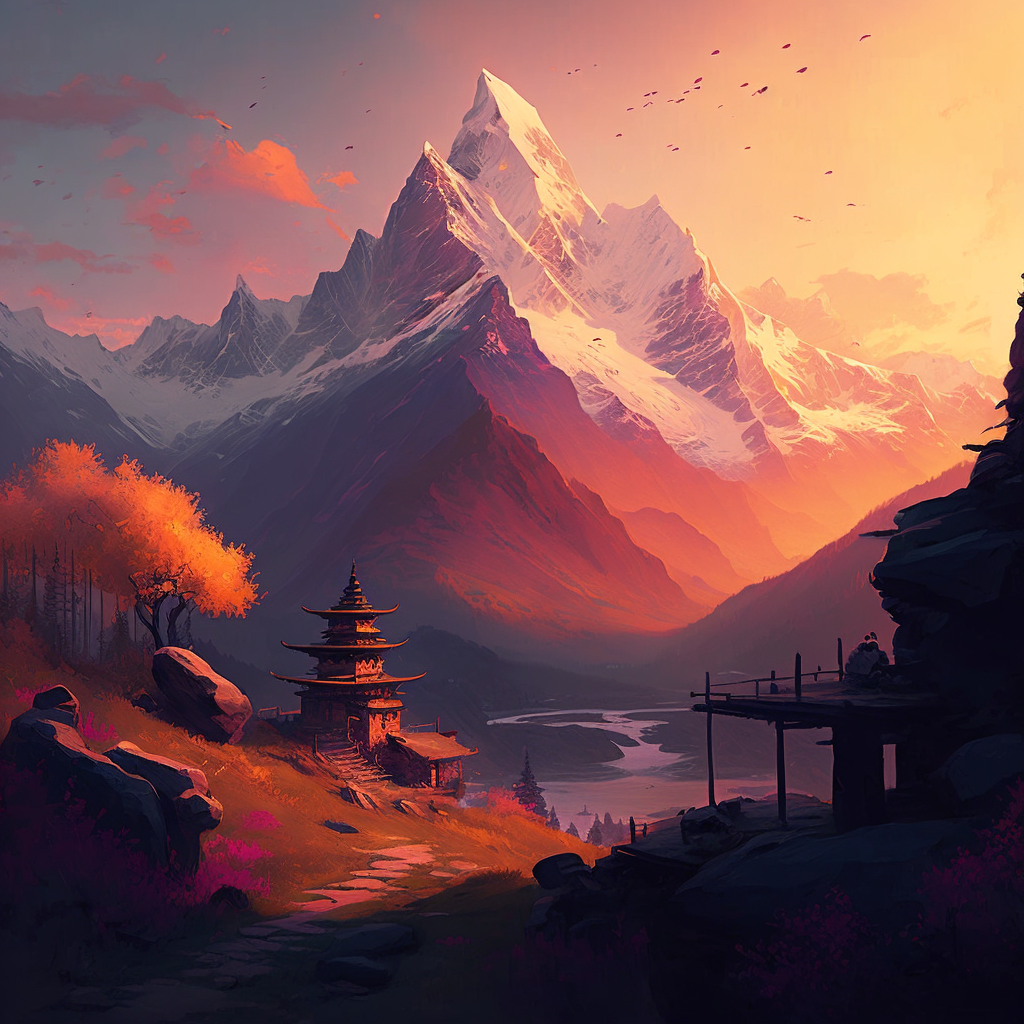The ideal time for the Tsum Valley Trek
Tsum Valley trek is possible throughout the year but spring (March-May) and autumn (September-November) are consideredto be one of the most popular choices for trekkers each season offering its beauty.
Spring (March-May)
The spring season starting from March to May is one of the best times to visit the Tsum valley as this season offers clear skies, warm weather and more than over 30 species of Rhododendron blooming can be visible in this season. The average temperature is 20°C (68°F), with a high of 25°C (77°F) during clear days and a low of – 0°C (32°F) overnight above 2500 meters. Trekkers can capture the snow-capped mountains and beautiful landscapes blooming with colorful wildflowers adding a beautiful layer of beauty. However, there might be occasional rain showers and the trail might be crowded as spring season is one of the first choices for all the trekkers.
Autumn(September-November)
Another popular season to visit The Tsum Valley trek is the Autumn season starting from September to November when trekkers can capture the crystal clear skies and an unobstructed view of the himalayas. The monsoon rain will have passed making the regioninto a lush green paradise. The average temperature in autumn is 20°C (68°F), with a high of 25°C (77°F) during clear days and a low of – 5°C (23°F) overnight above 2500 meters. In autumn you can enjoy the contrasting beauty of the forest with red and orange shades in the trees. However, the trek might be crowded as trekkers prefer this time of the year for the trek.
Different Weather in Tsum Valley
The Tsum Valley is one of the best trekking destinations but its weather can be unpredictable. Be prepared for anything from clear skies and sunshine to rain, fog, or chilly temperatures. Packing versatile clothing and gear is essential for a comfortable trek.
Night and Day Temperature Differences
Similar to other Himalayan regions, nights in the Tsum Valley can be significantly colder than daytime temperatures. Be ready for anything, including sunny, clear skies, rain, fog, and freezing temperatures.
Seasonal Weather in the Tsum Valley
It is difficult to predict the daily forecasts of the Manaslu region, but weather and temperature ranges typically follow seasonal patterns. You can talk to us before booking your trek for the most up-to-date information specific to the Tsum Valley:
Spring (March-June): Generally considered the best time to visit, Tsum Valley offers clear skies, comfortable temperatures, and (depending on the exact month) the possibility of witnessing blooming wildflowers.
Monsoon Season (July-Mid-September): Heavy rains can make trekking challenging during this time. While the exact impact on the Tsum Valley may vary, it's best to check with us before booking the trek.
Autumn (End of September-November): Another good time to visit the valley is in autumn as it offers clear skies and comfortable daytime temperatures. However, nights can be chilly, especially at higher elevations.
Winter (December-February): Winter attracts fewer crowds, but the weather can be quite cold. Consider if you're comfortable with potentially snowy conditions and sub-freezing temperatures.
Permits required for Tsum Valley Trek
Since the Tsum Valley is located within the Manaslu Conservation Area, it is considered a Restricted hiking area. Trekkers need specific permits from the Nepali government to enter this region.
Trekkers need these two permits to enter
Restricted Area Permit (RAP):
This permit is required to enter the Manaslu region, which includes Lower Gorkha and Tsum Valley. This Region comes under a restricted area due to its location as it is bordering Tibet. For border security regions and control of other activities and to protect the local culture and landscape it is declared a restricted area by the Nepal Government.
Permit Cost:
September-November (Autumn): $40 for the first week, then $7 for each additional day.
December-August (Winter, Spring, Summer): $30 for the first week, then $7 for each additional day.
Manaslu Conservation Area Project (MCAP):
The Manaslu Area Project permit fees are used for supporting the development and protection of the Manaslu Conservation area and Tsum Valley lies in the Manaslu conservation area so we have to get this permit. The cost depends on your nationality.
Permit Cost:
SAARC Nationals: NRs 1,000 per person
Other Nationalities: NRs 3,000 per person (NRs = Nepalese Rupee)
Things you should know about the Tsum Valley Trek Permit
- The permits are non-refundable, non-transferable and valid for single-entry use only and they are issued for individual trekkers only.
- Children under 10 years of age do not require a permit fee.
- You can get an entry permit only from Kathmandu and not from any other checkpoints along the trail.
- Entry permits should be with you throughout the trek andhave to show it to officials at the checkpoint.
- permit holders cannot enter anywhere else beyond the designated areas inside the conservation area and restricted area.
Physical Fitness Required for Tsum Valley Trek
Because of its challenging difficulty level, this trip requires a high level of physical fitness. Injuries or illness could be fatal, so please assess your level of fitness before planning for this trek.
Assess your fitness:
It is recommended to work out regularly (running, swimming, or the gym) for at least half an hour to get ready for the trip. At least 30 days before the trek, try to walk at a moderate speed for 30 to 45 minutes at a time. Not only will this increase your cardiovascular endurance but also your overall fitness. Your stability and endurance can also be improved by strengthening your back, legs, and core through exercises or stair climbing, particularly on uneven terrain.
If you're not currently meeting these criteria, don't worry! You can still prepare for the trek with a consistent training program:
- Start with shorter walks and gradually increase the duration and intensity as your fitness improves.
- Incorporate uphill sections into your walks or utilize a Stairmaster to simulate the trek's terrain.
- Focus on strengthening exercises like squats, lunges, planks, and core exercises.
- Listen to your body, don't push yourself too hard, take rest days when needed, and consult a doctor if you have any concerns.
Food and Accommodations
Food: The way of life in the Himalayas is distinct and challenging, and the cuisine is likewise diverse. There will be many tea places along the Trail that serve both vegetarian and non-vegetarian food. From hot and comforting thukpa and other regional specialities to, in certain locations, foreign cuisine as well.
Accommodations: The accommodations at Tea Hoses on the Mountain are extremely basic. The rooms usually have just two or three single beds, warm blankets, pillows, cosy matrices with connected bathrooms (but not always), and pleasant views. We will also make sure you are accommodated in the best tea houses with stunning views of the surrounding landscape and mountains during your journey.
Luggage/Backpack:
Throughout your trekking your luggage will be carried by our porters and you have to carry your own small baggage containing your own water bottle, towel, tissue or toilet paper, camera or any other stuff which you usually carry and this small baggage should be carried by yourself. Some of the gears and clothes which are not needed during your trek can be left in the hotel safe deposit box carefully locking it properly and for the deposit there will be no charges so, you can freely keep your belongings which are not needed. The Nepal domestic airlines do not exceed more than 15 kg which also includes your hand baggage. If your baggage exceeds more than 15 kg then some charge should be deposit which is not included in the package.
Guide/Porter on Trek:
We the company Redrose Travel will be providing you the well expert trained trekking guide who will be handling all your trip issue. Also we will be providing you a cordial and sincere porter who will be carrying your 10 kg luggage of each client. Like if you are trekking in a huge group like more than 10 people than we will be providing you an extra guide which will be divided into two groups or more than three according to the number of people in the group.
Group Size, Guide and Crew Member:
Redrose Travel arranges trek with the minimum solitary client to maximum 16 clients in a group. In the larger group we will be arranged by dividing the groups. However one can stay in the same lodge but during your trek you will be having a different guide. We theRedrose Travel offers one guide for maximum 10 people in the group and if the number exceeds more than 10 till 16 then we will be providing you 2 guides.
Personal Expenses on Trek:
Your personal expenses should be deposited by yourself like if you addicted to alcohol and all the alcohol you consume during your trip should be paid by yourself that goes to snacks or any other additional meals. Though the cost of accommodation and meals are included in package but such additional meals and drinks- alcohol and non-alcohol beverage, snacks, tips for guide and porters, hot shower- accessible only in some hotel, entrance fee around $ 25 for visiting heritage sites of Kathmandu, meals while you are in Kathmandu and the normal meals will cost around $ 5-7. It is up to you whether you like to give tips to the guide and porter, if you are satisfied with their services then you can tip them.
Gears Available in Kathmandu:
For the trekking equipment you can easily get it at Nepal country stores at the reasonable price and if you like you can also rent the trekking equipment. You don’t have to carry or buy from your hometown because all the trekking gear can be easily available in this country –Nepal.
A Typical Day on Trek:
On a customary day you are necessary to trek for 4-6 hours each day. After breakfast we will start to walk and then we will be stopping for a lunch and after lunch we will walk for 3-4 hours to reach our destination. After lunch we will be trekking only for few hours and we will reach our trekking destination in 1—2 hours. Like in some days you will reach your destination in afternoon hours and then you can have lunch and then relax, or take shower, read a novel or wander around the area and even you can play cards with the group, guide and all.
Our Greetings at Airport:
We suggest you that when you are confirmed for this trip we advise you to give us your international flight schedule so, we the team can easily get to you and pick you up from the airport on time. As soon as you finish processing the customs formalities and come out from there and there you can find our representative carrying a signboard of Redrose Travel and the team will greet you and take you to the hotel in private vehicle. Like if you have already booked the hotel by your own then we advise informing the hotel that you are staying so it will be easy for our representative to drop you at the hotel.
Itinerary and Possible Changes on it:
Our usual itinerary of the trek is 19 days which is main customary and pragmatic that has also included your arrival day, departure day or Kathmandu sightseeing day tour are all included in this package itinerary. If you like to adjust the itinerary we can set it for you as per your desire so, before that let us know before booking the trip and then we will arrange the itinerary and the cost. Like if you like to extend more days then we will even manage it for you as in our package we have kept extra day because we don’t know the situation of Himalaya weather it suddenly changes and faces problems like delayed flights or cancellation of flight.
Insurance/Rescue/Evacuation:
Client’s safety is our main priority and makes sure that each and every client is well taken care of. If by chance anyone got sick during trek we will take you to the hospital and if one is seriously ill then we will rescue a helicopter and then they will take you to the hospital and all the expenses are carried out by the travel insurance company so, make sure to cover the insurance policy. For the further information you can go to the Nepal Travel Insurance page.
Booking and Payment:
For booking any trip, trek, expedition first you have to deposit 20% in advance if you are confirmed for the trek you have to send even your flight detail schedule, a passport photocopy and if you cancel the booking then this 20% is not -refundable. The remaining 80% can be paid when you reach Kathmandu and if you want to pay in advance you can deposit it by transferring through a bank, credit card so, lets us know then we will be sending you the detail for payment.







